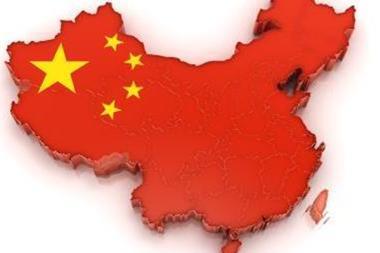With GDP and growth envied by many Western countries, China is increasingly shaping the global economic landscape

In the past decade, one country – China – has shaped the global economy more than any other. It may not technically be the number-one world superpower yet, but that time will come soon as the outlook for the West continues to flatten. Seven decades of US dominance could end within five years, according to analysis from Deutsche Bank. At that point, China is predicted to become the single largest contributor to global GDP.
For some Chinese people, overtaking the US to become the most powerful country on earth will mark a return to the natural order. By bringing the country back to the position it once held at the height of imperialist rule more than 1,000 years ago, the rightful balance of power will be, as they perceive it, restored.
China’s economic growth has dwarfed that of other major nations since 2000. Its GDP figures, once in double digits, may have eased since 2010, but they remain healthy at 7%-plus. Even so, many governments fret more about China’s GDP growth potential than their own, reasoning that a Chinese slowdown, no matter how fractional, will erode demand for goods and services and damage their economies. Proximity dictates that other nations in the Asia-Pacific region are most susceptible – but such is China’s trading strength, nowhere is immune.
GDP figures reveal only part of the picture, however, and China’s dominance is also unsurpassed on many other levels. Spending patterns generated by the spectacular growth of its burgeoning middle class have global implications on everything from property to poultry prices and almost all consumables in between.
Geopolitically, China might be deliberately isolationist, but that does not mean it lacks influence. Also, its detachment should not be confused with indifference; international policymakers therefore ignore China’s reactions at their peril.
China is also a country of extremes and contradictions, mainly owing to its enormous and diverse population. For example, China is officially an atheist country, where religion was once banned and is now tolerated at best. Yet, Christianity is booming. By 2030, the country is expected to have the world’s highest number of Christians, with more than 250 million churchgoers.
Similarly, although Western websites such as Facebook are prohibited, social media use is prolific, with more than 100 million messages posted daily on the country’s Weibo microblogging website.
Alibaba Group, China’s e-commerce giant, went public through a US initial public offering (IPO) in September, with the initial market cap of $169bn (€137bn) valuing the business more than Facebook and Amazon. Share values have soared even further since the IPO and would rank it among the top 10 on the S&P 500 if it appeared on the index.
So, what are the main risks of doing business in China? The answer would depend on one’s perspective, the risk appetite of a company and whether it is China-based or connected to a foreign-owned entity. Potential pitfalls are certainly numerous: regulatory, cyber, natural catastrophe, reputation and human capital being among the biggest. Although investment from outside China is encouraged more than ever before, foreign companies still need to tread carefully in case they fall foul of the authorities. Guanxi – developing relationships the Chinese way – is also important, as is a deep understanding of the country’s culture and way of thinking. On the flipside, the opportunities and rewards are plentiful.
Risk management growth
The perception of risk within China is interesting. Despite the country’s rapid economic and corporate growth, risk management is still at a fledgling stage. However, the number of risk professionals is growing steadily, as is their understanding of this increasingly complicated subject.
These changes were evident at two roundtables StrategicRISK organised in Beijing and Shanghai in September, our first in mainland China. Thirty leading risk and insurance professionals from major businesses operating in China attended discussions at the two Zurich-sponsored events to share their views on the threats and opportunities presented by a broad range of risks.
Attendees were dynamic in their outlook and their attitude to risk, and it was clear that this small pioneering group of risk managers was engaged in promoting positive risk practice among their businesses and beyond.
These discussions would not have taken place five years ago as the risk profession was almost non-existent, but much has changed in that time and it was evident from conversations in both cities that China’s risk professionals are knowledgeable and forward-looking.
True enterprise risk management may be some way off yet for most businesses but it will, in time, become embedded within the majority of large Chinese companies. Together with the increasing support from the country’s growing insurance and broking sectors, the current state of risk management in China stands companies in good stead to help them tackle problems and make the most of the advantages the country offers.
Human capital
Beijing and Shanghai are two contrasting cities. As well as being China’s capital, Beijing is deliberately symbolic of the country’s past and reminders of its rich history are everywhere. Shanghai, on the other hand, is the gleaming face of modern China, which is reflected in its ultra futuristic skyline.
However, little distinguishes the two cities with regard to risk issues, and the key concerns of delegates at the debates were broadly similar.
Many risk managers considered human capital as the biggest worry – perhaps surprisingly, given that China has a population of 1.366 billion people. Recruiting people with the right skills and then retaining them is a concern that will resonate with risk professionals around the world, but China’s recent growth has only compounded the problem domestically. The growth has generated economic benefits and driven business expansion, but it has also brought significant improvements to the country’s education system. With more young people than ever leaving higher education, graduates are eschewing less skilled working roles in favour of jobs more suited to their qualifications.
China’s one child policy has further exacerbated the situation by limiting the number of people of working age. Although restrictions on this were relaxed recently, the results of these changes will not be seen until those born under the new policy come of working age.
Many risk professionals in our debates recognised that, in China, as in many other countries, supporting an ageing population with a limited and relatively inflexible group of working age is a challenge.
At a time when skills at all levels are required to sustain growth, being able to recruit the right employees is crucial. Other countries confronted with this problem can import labour to fill roles, but this cannot be done so easily in China. Some Chinese firms are therefore looking to open operations in other countries, such as India or Vietnam, where labour costs are lower. However, this is not an option for all firms in China, and, for example, the service and manufacturing sectors are struggling to fill positions despite ambitious expansion plans and lengthy order books.
“Finding the right talent among Generation Y is a challenge,” says Keith Xia, head of risk management, Greater China, InterContinental Hotels Group (IHG). “People from Generation Y have more choice about where to work than ever before, so it’s important IHG actively recruits and develops people to be passionate about the hospitality industry.”
Xia, who is also a board member of the Pan-Asia Risk & Insurance Management Association, says that to help develop the required talent, IHG has established the IHG Academy, a global collaboration between IHG hotels and local education providers that provides local people with an opportunity to learn the necessary skills to work in hospitality. “The IHG Academy partners with more than 30 institutions in China to train young people, so that when they graduate, they have the skills to work in our hotels. This programme is one of our core corporate responsibility initiatives and I regularly speak in schools about risk management.”
The talent issue might be less evident in Beijing and Shanghai since, as the country’s key cities, they attract many younger people, but the skills gap is noticeable in third- or fourth-tier cities. One risk manager at the discussions said that were their company looking to develop operations in a city with a population even as high as five million, they would have to factor in the difficulty of being able to recruit appropriate talent and, in some instances, it might prove impossible.
The Chinese government is trying to deal with the talent situation on a number of fronts.
“Large cities and coastal cities can find talent to work for their enterprises more easily than elsewhere in China,” says one risk manager at a large corporation who wanted to remain anonymous. “The government understands this and is moving to change the situation. It has been investing more in parts of Western China, especially to attract talent and resources to develop the economy in the region. The government is also looking to reform the education system to foster more talent and provide an even better supply to the labour market.”
Salaries gap
Improving salaries is another change the government is introducing, as Iris-Yan Ding, country insurance risk manager for power and automation company ABB, explains: “It is not hard to find suitable people for our white collar positions, but it is much more difficult for companies to find blue collar staff,” she says. “In China, the salary gap between white and blue collar employment is significant. Most people would prefer white collar roles, if they get the opportunity. I understand that, in Europe, the difference between white and blue collar salaries is not so pronounced and it is starting to change here as the government moves to close the gap.”
Regulatory changes
Regulatory issues are another worry cited by risk professionals. The issue is not that more legislation is being introduced, they say, but that existing regulation is being enforced more rigorously. Businesses based outside China face some of the toughest regulation, particularly in terms of anti-competition rules.
Other legal issues are also raising concerns. One risk professional working for a non-China based business said that enforcing contracts in China was difficult, if not impossible, stating that contracts should be used only as a guide. In effect, foreign companies cannot take disputes to court, primarily because the opposing party may be connected to the state. Legal action can therefore potentially negatively affect the foreign company operating in China.
Nonetheless, most risk managers at the roundtables agreed that a strong regulatory system is key to bringing China in line with accepted international standards, especially in an area such as safety, for which the country has been criticised in the past.
“The regulatory system mainly with relation to economic activity in China is changing as it moves towards internationally accepted standards,” says Simon Wu, director at Aon-COFCO. The logic behind this is to promote capital flows, trade and business activities between China and Western countries.
“These changes are not in any way meant to deter business,” says Wu. “It is a move in a positive direction for China. It will become easier for Western enterprises to operate in China now and in the future as the country is becoming more open by adopting globally accepted standards. This will make it more straightforward to do business and to invest in China. Transparency with legislation and regulation will improve and this will also make it easier for Chinese businesses and even government bodies to think and also behave on an international basis.”
Reputation is no less a risk in China as it is in the West. Indeed, many risk professionals told StrategicRISK about the significance of brand integrity. Two major food safety scandals (one involving out-of-date meat sold to fast food restaurants and the other connected to contaminated dairy products) have demonstrated the potentially damaging consequences surrounding reputational risk.
Although the insurance sector continues to seek appropriate coverage and protection for reputational damage risk – something many risk professionals in China would welcome – the future seems to lie in businesses and insurers developing strategic approaches to minimising the effects of reputational damage and helping clients make the best choices.
“The scale, speed and immediate nature of social media mean China is open to the same scrutiny as elsewhere, where issues become public quickly and can immediately [negatively] affect a firm’s reputation,” says IHG’s Xia. “Global companies realise the importance of social media and respond accordingly, but more importantly, they put an emphasis on protecting the reputation of their business in advance.”
False or inaccurate media stories are another issue for companies, particularly when compounded with the widespread use of social media, according to Richard Li, risk manager at specialist engineering firm Alstom. He highlights the example of a train crash in China in which parts manufactured by his company were incorrectly said to be involved.
“It was not true, but it did not stop the media from reporting it,” says Li. “Alstom’s country president made an internal conference call across China to tell every employee that the news reports were false. It is not rare for false rumours to spread or to see misleading reports in China, especially through social media. Journalists, other writers or so-called ‘professionals’ frequently make their reports and comments without proof, which is irresponsible. All they want is to attract readers or viewers. Fortunately, our customers are big corporations and they would not be misled by rumours [so easily].”
Political troubles
To those outside China, political risk might seem to be a pressing concern, particularly in light of September’s protests by pro-democracy activists in Hong Kong, the former British colony which is now a Special Administrative Region of China. However, the situation is viewed from a rather different perspective by risk professionals with whom StrategicRISK spoke.
“Political risk is not a major issue in China,” says Alstom’s Li. “The political system in China differs from the one in the West as it is more centralised, but that does not make it more of a risk. The type of protest seen in Hong Kong recently is unlikely to happen on mainland China in the foreseeable future. Government policy might be scrutinised, but that does not mean a complete democracy process would solve every problem – it may lead to an even worse situation.
“China is a huge country and if every community or province took to the streets to protest, chaos would ensue. Any change to the current political process has to be slow to protect the stable situation that exists at the moment in China. It is for this reason that China has been the most stable country in the world for the past two or three decades.”
The situation with Hong Kong is different, says Xia, which can be explained by its history. “Hong Kong has boomed because it is unique,” he says. “Before China was opened to the West, Hong Kong was the only real link between the two and it is that connection that has made Hong Kong so important. Some people in Hong Kong are used to Western-style values, but still need to get used to mainland Chinese values.”
A comprehensive StrategicRISK China Risk Report will be published later this year to expand on these and other issues. To see all our Asia risk reports, go to: www.strategic-risk-global.com/asia/asia-risk-report




















No comments yet